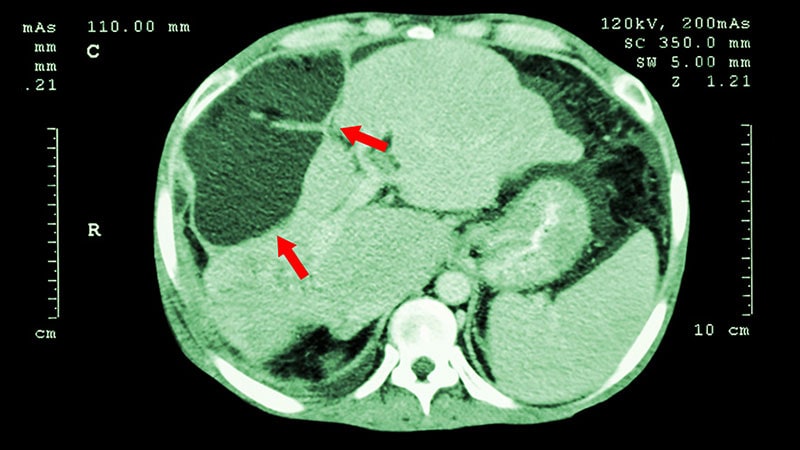TOPLINE:
New research suggests that the presence of high-risk colon polyps at screening colonoscopy is significantly associated with an increased risk for death from hepatobiliary cancer.
METHODOLOGY:
-
Researchers conducted a retrospective analysis of 343,838 screening colonoscopies performed in Austria from 2007 to 2020. National death registry data were used to identify deaths from gastrointestinal cancers among patients in the cohort.
-
Risk for hepatobiliary cancer death by colon polyp risk profile was assessed.
-
A cause-specific Cox regression model was used to estimate the association of time to death with polyp risk group at screening colonoscopy.
TAKEAWAY:
-
Of the screening colonoscopies, 17,678 (5.1%) revealed high-risk polyps: that is, polyps ≥ 10 mm, adenomas with high-grade dysplasia, serrated polyps with dysplasia, or five or more adenomas.
-
The cumulative incidence of hepatobiliary cancer death was 0.19% at 6 years and 0.44% at 12 years in the high-risk polyp group vs 0.07% and 0.18%, respectively, in the negative colonoscopy group.
-
Overall hepatobiliary cancer mortality was more than twice as high in patients with high-risk polyps compared with peers who had negative colonoscopy (cumulative incidence, 0.39% vs 0.17%).
-
After adjustment for age and sex, the presence of high-risk polyps at screening colonoscopy was significantly associated with death from any hepatobiliary cancer (hazard ratio [HR], 1.83); the HRs for death from hepatocellular carcinoma (HCC) and non-HCC hepatobiliary cancer were 1.79 and 1.88, respectively.
-
There was no significant association of low-risk polyps with hepatobiliary cancer death (HR, 1.23).
IN PRACTICE:
“Hepatobiliary cancers share risk factors with colorectal cancer, but there are no combined screening programs for these conditions,” the researchers write. “Our findings imply that risk stratification at colonoscopy might be helping to identify patients at need for liver cancer surveillance. However, further studies will be needed to address whether a targeted surveillance of these patients will be cost-effective.”
SOURCE:
The study, with first author Jasmin Zessner-Spitzenberg, MD, of the Medical University of Vienna, Austria, was published online September 12 in Digestive and Liver Disease.
LIMITATIONS:
Some liver cancer deaths might have been falsely classified as other hepatic cancers. The authors lacked information on modifiable cancer risk factors. The generalizability of the findings outside of the screening setting is limited.
DISCLOSURES:
Support for data collection was provided by the Main Association of Statutory Insurance Institutions, the Austrian Society for Gastroenterology and Hepatology, and Austrian Cancer Aid. One author reported relationships with various pharmaceutical companies.
For more news, follow Medscape on Facebook, X (formerly known as Twitter), Instagram, and YouTube
Source: Read Full Article
